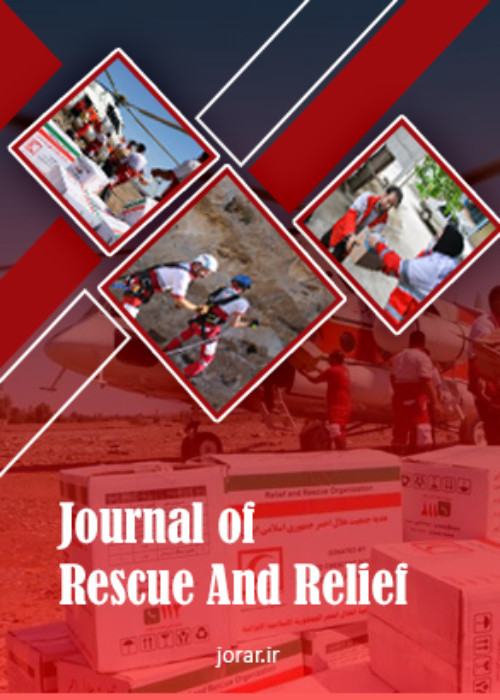Determining the risk of critical activities in organizational life management system based on ISO 22301 standard (case study: Municipality of district 1of Tehran)
Article Type:
Research/Original Article (دارای رتبه معتبر)
Abstract:
Background
Paying attention to the operational processes of emergency or crisis management has widened in the country that can be cited the legal requirements of the prospectus document at 1404 horizons and the policies of the system related to establishing responsible organizations for crisis management. Business Continuity Management Systems (BCMS) with the requirements of ISO 22301 are factors reducing potential hazards for key activities of the municipality of Tehran. This research describes the standard challenges in the municipality of Tehran's district.
Method
This descriptive-applied research, crisis cases are identified by using questionnaires, interviews, and group seminars through Delphi method. In the following, by analyzing the consequences Business Impact Analysis (BIA) in four major missions such as safety, health, credibility of the organization and citizens' dissatisfaction, important events of crisis were identified using the relative weighting indicator. At the final stage of Delphi, the consensus reached its ultimate goal by assessing the probability of occurrence and severity of events, the unacceptable risk determines
Findings
The findings showed that the average score is more than mean, if the subject's score on the Likert scale is higher than the median, the attitude toward the subject is considered positive. At 99% confidence level, Kolmogorov-Smirnov test was significant (p-value=0.05). Therefore, a nonparametric test should be used. Spearman correlation coefficients were the largest among the research variables (0.559). In the risk analysis section, the risk number of disruptive events of vital activity was derived from the probability and severity of the event between 1 to 16.
Conclusion
By analyzing the outcomes of Business Impact Analysis ((BIA) from six main operating factors of organization services such as violation of laws, financial damages, environment, social and security consequences, organizational credibility, possible risk of any outcome at stopping the activity is calculated by considering the probability of occurrence and velocity of the event. In order to achieve the first priority of municipality activities, with the Delphi method, in several steps, priorities out of 208 critical activities fell to 56 and 38 respectively. Finally, a final agreement was reached on the 10 main activities. More important events for the first year include waste collection, snow removal, IT support services, emergency management, management of emergency response, and emergency services.The maximum number of risks obtained for the emergency event is related to lack of coordination between organizations, traffic problems, and blocking the roads, lack of preparation and earthquake above six Richter.Keywords:
Language:
Persian
Published:
Scientific Journal of Rescue Relief, Volume:10 Issue: 2, 2018
Pages:
45 to 59
magiran.com/p1946766
دانلود و مطالعه متن این مقاله با یکی از روشهای زیر امکان پذیر است:
اشتراک شخصی
با عضویت و پرداخت آنلاین حق اشتراک یکساله به مبلغ 1,390,000ريال میتوانید 70 عنوان مطلب دانلود کنید!
اشتراک سازمانی
به کتابخانه دانشگاه یا محل کار خود پیشنهاد کنید تا اشتراک سازمانی این پایگاه را برای دسترسی نامحدود همه کاربران به متن مطالب تهیه نمایند!
توجه!
- حق عضویت دریافتی صرف حمایت از نشریات عضو و نگهداری، تکمیل و توسعه مگیران میشود.
- پرداخت حق اشتراک و دانلود مقالات اجازه بازنشر آن در سایر رسانههای چاپی و دیجیتال را به کاربر نمیدهد.
In order to view content subscription is required
Personal subscription
Subscribe magiran.com for 70 € euros via PayPal and download 70 articles during a year.
Organization subscription
Please contact us to subscribe your university or library for unlimited access!


